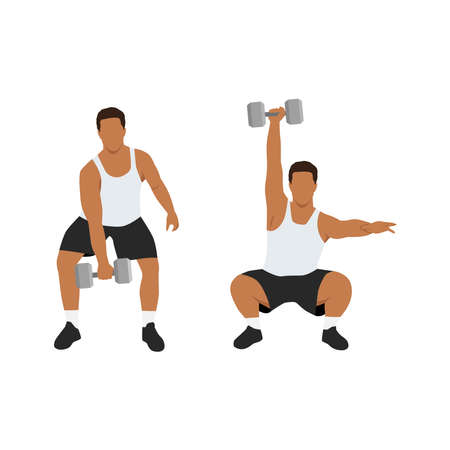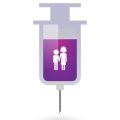What Is Chronic Pain and Why Does It Happen?
Chronic pain is more than just a lingering ache or discomfort. Unlike the short-term pain that happens after an injury or surgery—pain that usually goes away as your body heals—chronic pain sticks around for months or even years. In the United States, millions of people live with chronic pain every day, making it one of the most common health issues affecting adults.
Defining Chronic Pain
Doctors generally define chronic pain as any pain that lasts longer than three months. This kind of pain can be steady or come and go. It might feel sharp, dull, burning, or throbbing, and it can affect almost any part of the body.
Common Causes of Chronic Pain
There are many different reasons why someone might develop chronic pain. Sometimes, it starts with an injury that never fully heals. Other times, the cause isn’t so clear. Below is a table showing some common causes:
| Cause | Description |
|---|---|
| Arthritis | Joint inflammation causing long-lasting pain and stiffness |
| Back Problems | Issues like herniated discs or spinal stenosis |
| Nerve Damage (Neuropathy) | Pain from damaged nerves, often in hands and feet |
| Migraine Headaches | Severe headaches with throbbing pain, often recurring |
| Fibromyalgia | Widespread muscle pain and tenderness throughout the body |
| No Clear Cause | Pain without a known reason, sometimes called idiopathic pain |
The Impact on Daily Life in America
Living with chronic pain can make everyday activities difficult—things like going to work, spending time with family, exercising, or even sleeping well at night. According to recent surveys, about 1 in 5 American adults report having chronic pain. This can lead to emotional stress, trouble focusing at work, less time spent with loved ones, and even depression or anxiety.
Everyday Challenges for People with Chronic Pain:
- Trouble getting out of bed in the morning
- Difficulty sitting or standing for long periods
- Missing social events due to discomfort or fatigue
- Having less energy throughout the day
- Needing help with simple tasks like grocery shopping or cleaning
The Importance of Understanding Chronic Pain
Chronic pain isn’t just “in someone’s head”—it’s a real medical condition that deserves attention and care. Recognizing its impact is the first step toward finding better ways to manage it and improve quality of life for millions of Americans.
2. The Emotional and Social Effects of Living with Chronic Pain
Chronic pain doesnt just affect the body—it touches every part of a persons life. Many Americans living with ongoing pain face challenges that go beyond physical discomfort. The emotional and social effects can be just as tough to manage as the pain itself.
Mental Health Challenges
It’s common for people with chronic pain to feel frustrated, anxious, or even depressed. The constant struggle can lead to feelings of isolation or hopelessness. Everyday tasks may become overwhelming, and it’s easy to feel misunderstood by others who don’t see the pain on the outside.
Common Mental Health Effects
| Effect | Description |
|---|---|
| Anxiety | Worrying about when pain will strike or how bad it might get |
| Depression | Feeling down or losing interest in things you once enjoyed |
| Sleep Problems | Trouble falling or staying asleep due to discomfort or stress |
| Irritability | Getting upset easily, often from frustration or exhaustion |
| Social Withdrawal | Pulling away from friends, family, and activities because of pain or low mood |
The Impact on Daily Life and Relationships
Living with chronic pain can make it hard to keep up with work, hobbies, and relationships. You might have to skip events or cancel plans at the last minute. Over time, this can strain friendships and family connections, leaving you feeling alone.
The Importance of a Holistic Approach
A holistic approach means looking at the whole person—not just the painful area. Physical therapy doesn’t only focus on movement; it also considers your mental well-being and social needs. Therapists often work with other healthcare providers to help you manage stress, set realistic goals, and rebuild confidence.
How Physical Therapy Supports Emotional Wellness
| Physical Therapy Focus | Mental & Social Benefits |
|---|---|
| Personalized exercise plans | Boosts mood through activity and achievement |
| Pain management education | Reduces fear and anxiety by increasing understanding and control |
| Encouragement of social participation | Helps reconnect with friends and community activities at your pace |
| Goal setting and progress tracking | Builds confidence and motivation over time |
| Referral to counselors if needed | Offers extra support for depression, anxiety, or relationship issues |
If you’re living with chronic pain, remember that you’re not alone—and there are resources out there that address both your body and mind.

3. Physical Therapy: A Science-Backed Solution
Physical therapy is a trusted and research-supported approach for managing chronic pain in the United States. Unlike quick fixes or just masking the pain, physical therapy focuses on finding the root cause and creating a personalized plan to help you feel better for the long haul.
What Is Physical Therapy?
Physical therapy (PT) is a healthcare specialty that helps people restore movement, improve strength, and manage pain through targeted exercises, hands-on care, and education. Licensed physical therapists work with people of all ages who deal with chronic pain due to injuries, medical conditions, or unknown causes.
How Physical Therapists Tailor Your Treatment
No two people experience chronic pain in the same way. That’s why physical therapists take the time to understand your unique situation before designing your treatment plan. Here’s what you can expect during PT:
| Step | What Happens | Why It Matters |
|---|---|---|
| Initial Assessment | Your therapist will ask about your medical history, daily routine, and how pain affects your life. | This helps them see the whole picture and set realistic goals with you. |
| Personalized Plan | Together, youll create a treatment plan tailored to your needs, goals, and lifestyle. | No cookie-cutter programs; everything is designed just for you. |
| Guided Exercises | You’ll learn specific stretches and strengthening moves to target your pain areas. | These exercises help build up weak muscles and improve flexibility over time. |
| Pain Management Techniques | Your therapist may use manual therapy (hands-on techniques), heat/cold packs, or other tools. | These methods can provide immediate relief and support healing. |
| Education & Support | You’ll get tips on posture, body mechanics, and lifestyle changes to prevent future pain. | The goal is to empower you to manage pain outside of appointments too. |
Science Shows It Works
Many studies have shown that physical therapy can reduce chronic pain symptoms and improve quality of life—often more effectively than medication alone. By addressing both the physical and emotional sides of pain, PT offers a comprehensive solution that works for many Americans living with chronic conditions.
4. What to Expect in Your Physical Therapy Journey
Starting Your Path to Relief
When you start physical therapy for chronic pain in the United States, it often feels like stepping into a supportive partnership. Your journey begins with an initial assessment and continues through setting personalized goals and working closely with your care team. Here’s what you can expect at each stage of your physical therapy experience:
The Typical Physical Therapy Process
| Stage | What Happens | Your Role |
|---|---|---|
| Initial Assessment | A licensed physical therapist reviews your medical history, asks about your symptoms, and performs physical tests to understand your pain and movement. | Be open about your pain, daily challenges, and health goals. |
| Goal-Setting | You and your therapist set realistic, meaningful goals—like walking farther, doing household chores with less pain, or returning to favorite activities. | Share what matters most to you and help shape your therapy plan. |
| Treatment Plan Development | Your therapist creates a customized plan that may include exercises, manual therapy, education, and home strategies. | Commit to attending sessions and practicing exercises at home. |
| Ongoing Collaboration | You’ll check in regularly with your therapist about progress. Adjustments are made as needed based on your feedback and results. | Communicate openly about what’s working and where you need more support. |
| Graduation & Maintenance | Once goals are met or you’re ready for self-management, you’ll get a long-term plan to keep up progress and manage flare-ups independently. | Continue using the tools and exercises you’ve learned in everyday life. |
Your Care Team: A Collaborative Approach
In the U.S., physical therapists often work alongside other healthcare providers like primary care doctors, orthopedic specialists, or pain management teams. This collaborative approach ensures you get well-rounded care tailored to your unique needs. Don’t hesitate to ask questions or request updates so everyone stays on the same page regarding your treatment.
What Makes Physical Therapy Different?
Unlike quick fixes or passive treatments, American physical therapy focuses on empowering you with knowledge and practical skills. You’re encouraged to take an active role in your recovery, building habits that support lasting relief from chronic pain. With patience, consistency, and teamwork, many people find they can regain control over their lives—one step at a time.
5. Real-Life Success Stories and Tips for Getting Started
Inspiring Stories from Across America
Many Americans who once struggled with chronic pain have found real relief and a renewed sense of hope through physical therapy. Here are a few motivating examples:
| Name | Pain Condition | Physical Therapy Approach | Results |
|---|---|---|---|
| Sarah, 42, Texas | Chronic lower back pain | Core strengthening, posture training, manual therapy | Returned to running and gardening after 6 months |
| Mike, 55, California | Shoulder pain from old sports injury | Range-of-motion exercises, resistance bands, education on movement modification | Back to playing tennis with friends and no longer needs daily pain meds |
| Lydia, 38, New York | Migraines linked to neck tension | Neck stretches, trigger point release, relaxation techniques | Migraine days dropped from 12/month to 3/month within 4 months |
Tips for Taking Your First Step Toward Relief
1. Talk to Your Doctor or Insurance Provider
If you’ve been dealing with persistent pain for more than a few weeks, ask your primary care doctor if physical therapy is right for you. Most insurance plans in the U.S. cover at least part of physical therapy costs with a referral.
2. Find a Licensed Physical Therapist Nearby
You can search for credentialed physical therapists using resources like the American Physical Therapy Association’s online directory (choosept.com). Look for someone experienced in treating your specific type of pain.
3. Set Realistic Goals Together
Your therapist will help you set personal goals based on what matters most to you—whether it’s being able to walk the dog, play with your kids, or just get through the workday without discomfort.
4. Commit to Your Plan—and Be Patient!
Progress takes time. Celebrate small victories along the way and communicate openly with your therapist about what’s working and what isn’t. Remember: consistency is key.
Your Journey Starts Now
No matter where you’re starting from, there are people all across America who have walked this path before you—and found lasting relief. Taking that first step toward physical therapy could be your turning point too.


